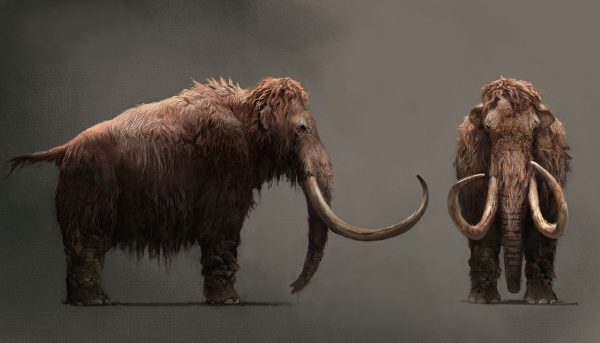You never know where a relationship will take you. With Highways England we (quite reasonably) expected roads, also bridges, and perhaps tunnels and cars. This week we’ve been 3d-scanning tusks of prehistoric Woolly Mammoths alongside the jaw and face of a Woolly Rhino. How did that happen?
The A14 Cambridge to Huntington Improvement is the country’s largest construction project. It will cost £1.5bn, take 16 million-man hours and involve the excavation of 10,000,000m3 of material (none of which will be removed from the site). What no one accounted for amongst all that material, was that quietly at rest just south of the Fenstanton Travel lodge lay the near-complete remains of a hundred millennia-old Woolly Rhino and Mammoth fossil.
The entire scheme has been a treasure trove of archaeological discovery; to date they’ve uncovered three Neolithic henges, three bronze age burial mounds, 16 iron age settlements, 15 Roman sites, three Anglo-Saxon and one medieval village. These pristine fossils sit proudly amongst them all. Highways England – the government company behind the construction is ardent in ensuring their projects leave behind a positive legacy for the local community. In an ideal situation these finds would be displayed proudly in a local museum. The difficulty here is that they’ve spent 130,000 years cocooned in wet clay and now they’re out – they’re decomposing. Layers of ivory are slowly separating and the tusks are going to fall apart without thorough deep preservation. The other danger in exhibiting the remains and especially the tusks is their value; the Illegal trading of Ivory has meant an order of magnitude increase in its price – neither of these things are conducive for public exhibition.
The remains have already been sent to the Museum of London Archaeology (MOLA) for preservation but MXTreality were tasked with coming up with a way of “Donating” the materials to the A14 area without having to donate the materials themselves. Within the space of four days we proposed a solution, within a week we had the right equipment, and only three weeks later we’ve executed the plan.
We’ve used the Artec Eva 3d scanner to produce photo-realistic 3d representations of the tusks, jaw, and face, to a 16k resolution. Now that we have those scans they can be used in a multitude of ways from 3d-printing through to CGI recreations.
In a developing industry like ours, it’s sometimes tricky to forecast which market your product or service is best served in, what’s the best use case? It’s probably the question we’re most commonly asked. These Mammoths and Rhinos are a good reminder that mixed reality isn’t a self-contained technology for a use, but rather an extension or augmentation of your tool kit, that when used appropriately can produce rather impressive results – even in surprising circumstances.







